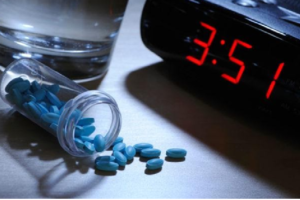
If you suffer from arthritis, particularly in your knees, you’ve probably tried everything to relieve the pain. Whether it’s physical therapy, pain medication, or lifestyle changes, it can often feel like you’re in a constant battle with discomfort. But what if there was a minimally invasive procedure that could significantly reduce your knee pain and improve your quality of life? That’s where genicular artery embolization (GAE) comes in.
What Exactly Is Genicular Artery Embolization?
GAE is a minimally invasive procedure used to treat chronic knee pain caused by osteoarthritis. Unlike more invasive surgeries like knee replacements, genicular artery embolization involves blocking specific blood vessels in your knee, which helps reduce inflammation and pain. Sounds complex? It’s actually quite straightforward when you break it down.
Here’s how it works: tiny particles are injected into the arteries that supply blood to your knee. These particles block off those arteries, reducing the blood flow to the inflamed area. With less blood flow, the inflammation decreases, leading to pain relief.
How Does GAE Compare to Traditional Treatments?
If you’re dealing with knee osteoarthritis, you know the usual line-up of treatments: rest, ice, pain relievers, injections, and possibly surgery if things get worse. While these methods can help to some extent, they often don’t provide long-term relief and may involve significant downtime.
Here’s where GAE stands out:
- Non-Surgical – You won’t have to go under the knife, making it far less risky than a knee replacement.
- Quick Recovery – Because it’s minimally invasive, recovery time is much faster compared to traditional surgeries. Many patients are back on their feet within days.
- Local Anesthesia – You won’t need general anesthesia, reducing potential complications and making the procedure safer for those who may not tolerate full anesthesia well.
- Immediate Relief – Many patients report feeling significant pain relief within a few days after the procedure.
- No Scarring – Since it’s done through a tiny incision, there’s no need to worry about long recovery periods or unsightly scars.
Is GAE Right for You?
GAE isn’t for everyone, but it’s worth considering if you’re dealing with chronic knee pain due to arthritis and haven’t had success with more conservative treatments. If your doctor has told you that a knee replacement might be on the horizon, but you’re not quite ready to commit to major surgery, GAE could be a middle-ground solution.
It’s particularly helpful for people who:
- Have moderate to severe knee pain that isn’t responding well to medication or physical therapy
- Are looking to delay or avoid a knee replacement
- Want a quicker recovery time without the risks of surgery
Before jumping in, it’s essential to talk to a specialist who can assess whether GAE is the right fit for you based on your medical history and specific condition.
The Benefits of GAE You Should Know
If you’re still on the fence about whether GAE is worth it, consider the long list of benefits that come with this procedure.
- Minimally Invasive – Since GAE doesn’t involve cutting into muscle or bone, it’s far less traumatic to your body.
- Faster Recovery – You can get back to your daily activities much quicker, sometimes in just a few days.
- Pain Relief – Studies show that many patients experience significant pain reduction for up to two years after the procedure.
- Low Risk of Complications – Compared to full-blown surgeries like knee replacement, GAE carries fewer risks, including infection or anesthesia-related issues.
- No Major Downtime – You can get back to your routine with minimal interruptions, which means you won’t have to take weeks off work or life.
What to Expect During the Procedure
If you’re thinking about going through with GAE, you might be curious about what happens during the procedure. Thankfully, it’s a pretty simple process that doesn’t require a lengthy hospital stay.
- Consultation – Your doctor will discuss the procedure with you and ensure you’re a suitable candidate.
- The Procedure – You’ll be given local anesthesia to numb the area. A tiny incision is made, usually near the groin, where a catheter is inserted to guide the particles into the knee’s arteries.
- Duration – The whole process takes about 1-2 hours, after which you can usually go home the same day.
- Recovery – Most patients feel relief in as little as a few days and are back to normal activities shortly after.
Does GAE Have Any Risks?
Like any medical procedure, GAE does carry some risks, but they are generally quite low. Some potential side effects include minor bruising or swelling at the incision site. More serious complications like infection or damage to surrounding tissues are rare but possible, so it’s essential to have a thorough consultation with your doctor beforehand.
Changing Your Life with GAE
If knee pain has been keeping you from living your life to the fullest, GAE offers a way to manage your symptoms without undergoing major surgery. With faster recovery times, fewer risks, and long-lasting relief, it’s an option worth considering if you’re looking for a way to get back to doing the things you love without the burden of constant pain.
So, if you’re tired of the discomfort and limitations arthritis has placed on your life, maybe it’s time to explore genicular artery embolization. Talk to your healthcare provider and see if this cutting-edge procedure could be the life-changing solution you’ve been waiting for.







